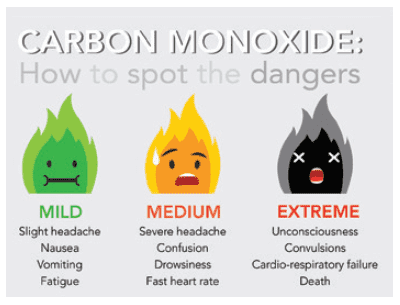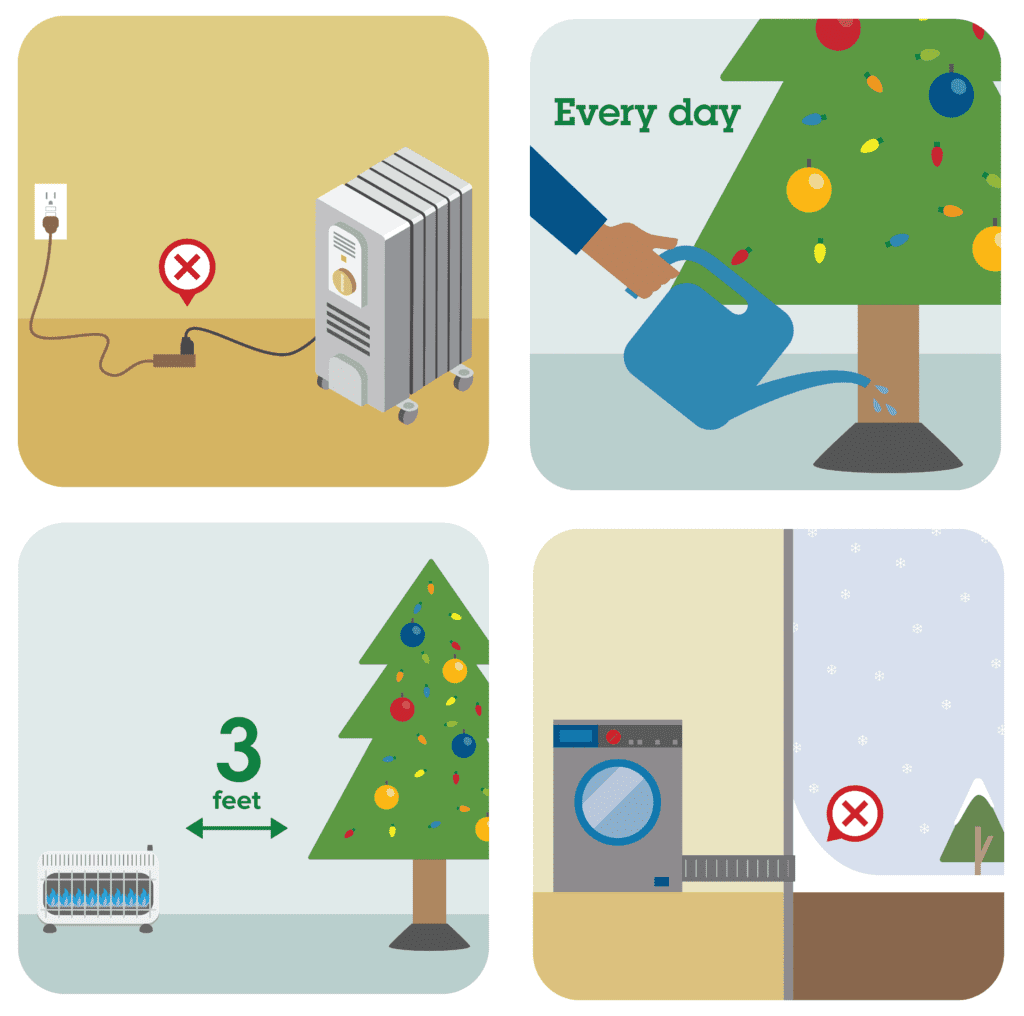 By Dave Sanders, Director of Safety and Risk
By Dave Sanders, Director of Safety and Risk
The holiday season is a festive time filled with lights and decorations, but it can also be a very dangerous season for home fires. Winter home fires cause 890 deaths and are responsible for $2 billion in property loss each year. While they account for only 8% of the total number of fires in the U.S., they are more deadly, resulting in 30% percent of all fire deaths. There are many potential causes of winter home fires, but there are also simple solutions to help prevent them:
 Space Heaters – NEVER plug a space heater into an extension cord or power strip. Always plug directly into a wall outlet, and only plug one heat-producing appliance into an outlet at a time. Place heaters on a solid, flat surface and keep them at least three feet away from anything that can burn. Turn space heaters off when you go to sleep or leave the room/house.
Space Heaters – NEVER plug a space heater into an extension cord or power strip. Always plug directly into a wall outlet, and only plug one heat-producing appliance into an outlet at a time. Place heaters on a solid, flat surface and keep them at least three feet away from anything that can burn. Turn space heaters off when you go to sleep or leave the room/house.- Dry Christmas Trees – Make sure to water live trees every day to keep them from drying out. Keep trees at least three feet away from heat sources like fireplaces, space heaters, heat vents, and candles. Get rid of your tree after Christmas or when it is dry.
- Holiday Lights – Inspect holiday lights each year before putting them up. Throw away light strands with frayed or pinched wires. Always unplug lights before going to bed or leaving your home.
- Fireplaces and Heating Vents – Have a qualified professional clean and inspect your chimney and vents every year. Make sure all vents for your furnace, stove, fireplace and dryer are clear of snow and other debris. Store cooled fireplace ashes in a tightly covered metal container and keep it outside at least 10 feet from your home and any nearby buildings.
- Access to Fire Hydrants – Firefighters need to be able to get to the hydrants quickly to protect people and property. Always keep snow and ice at least three feet away from fire hydrants.
 In addition to fire hazards, carbon monoxide incidents are more common during the winter months. Often called the invisible killer, carbon monoxide is an odorless, colorless gas created when fuels such as gasoline, wood, coal, propane, etc. do not burn completely. In the home, heating and cooking equipment that burn fuel are potential sources of carbon monoxide. Be sure to install and test carbon monoxide alarms at least once a month, and only use portable generators outdoors in a well-ventilated area away from your home.
In addition to fire hazards, carbon monoxide incidents are more common during the winter months. Often called the invisible killer, carbon monoxide is an odorless, colorless gas created when fuels such as gasoline, wood, coal, propane, etc. do not burn completely. In the home, heating and cooking equipment that burn fuel are potential sources of carbon monoxide. Be sure to install and test carbon monoxide alarms at least once a month, and only use portable generators outdoors in a well-ventilated area away from your home.
We hope these simple tips help you heat and decorate your home safely this season so that you and your family can enjoy a safe and happy holiday!
For more information on carbon monoxide poisoning, home fires and how to prevent them, visit www.usfa.fema.gov/winter and www.nfpa.org/winter.
 By Dave Sanders, Director of Safety and Risk
By Dave Sanders, Director of Safety and Risk Space Heaters – NEVER plug a space heater into an extension cord or power strip. Always plug directly into a wall outlet, and only plug one heat-producing appliance into an outlet at a time. Place heaters on a solid, flat surface and keep them at least three feet away from anything that can burn. Turn space heaters off when you go to sleep or leave the room/house.
Space Heaters – NEVER plug a space heater into an extension cord or power strip. Always plug directly into a wall outlet, and only plug one heat-producing appliance into an outlet at a time. Place heaters on a solid, flat surface and keep them at least three feet away from anything that can burn. Turn space heaters off when you go to sleep or leave the room/house.